A Walking Tour of Historic Downtown Suffolk

It’s a good time to be in Suffolk



It’s a good time to be in Suffolk





AA pleasant stroll through Suffolk’s downtown reveals the richness of our heritage and the role we have played in events that have shaped our great nation. Today you can trace generations of Suffolk residents by following Virginia Civil War Trails past historic churches, restored homes and mercantile shops. Architectural grandeur and eclecticism mingle elegantly as this small eighteenth-century trading community has evolved into a diverse, modern city.
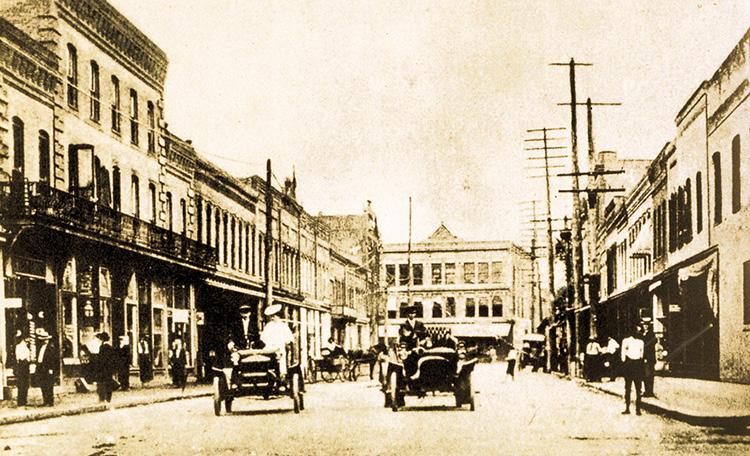 PHOTOS ABOVE, left to right: Downtown Suffolk, circa 1903; Farmer’s Bank of Nansemond building, circa 1910; Chadwick Theater, circa 1938; Amedeo Obici, founder of Planters Peanuts; Nansemond County Courthouse and Suffolk Visitor Center, today.
PHOTOS ABOVE, left to right: Downtown Suffolk, circa 1903; Farmer’s Bank of Nansemond building, circa 1910; Chadwick Theater, circa 1938; Amedeo Obici, founder of Planters Peanuts; Nansemond County Courthouse and Suffolk Visitor Center, today.


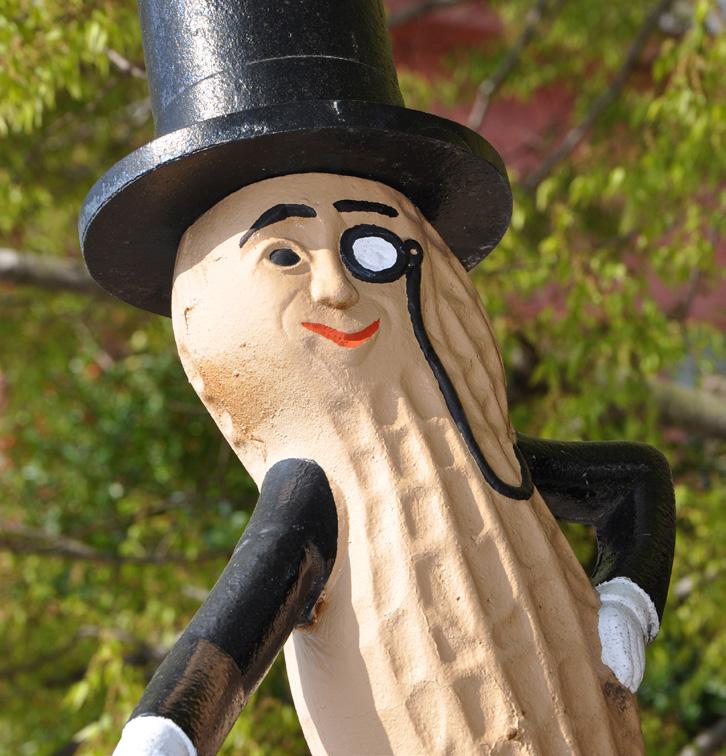



EEvery step leads to adventure as more than 400 years of history unfold before you. Walk in the footsteps of the Nansemond Indians, English settlers, traders and artisans of “Suffolk Towne.” Trace the marches of Confederate and Union armies and feel the indomitable spirit that lifted Suffolk from the ashes four times in history. Experience the heartbeat of a vibrant community that attracted the likes of George Washington and Amedeo Obici, the founder of Planters Peanuts. You’ll enjoy your walk and discover a whole new world.



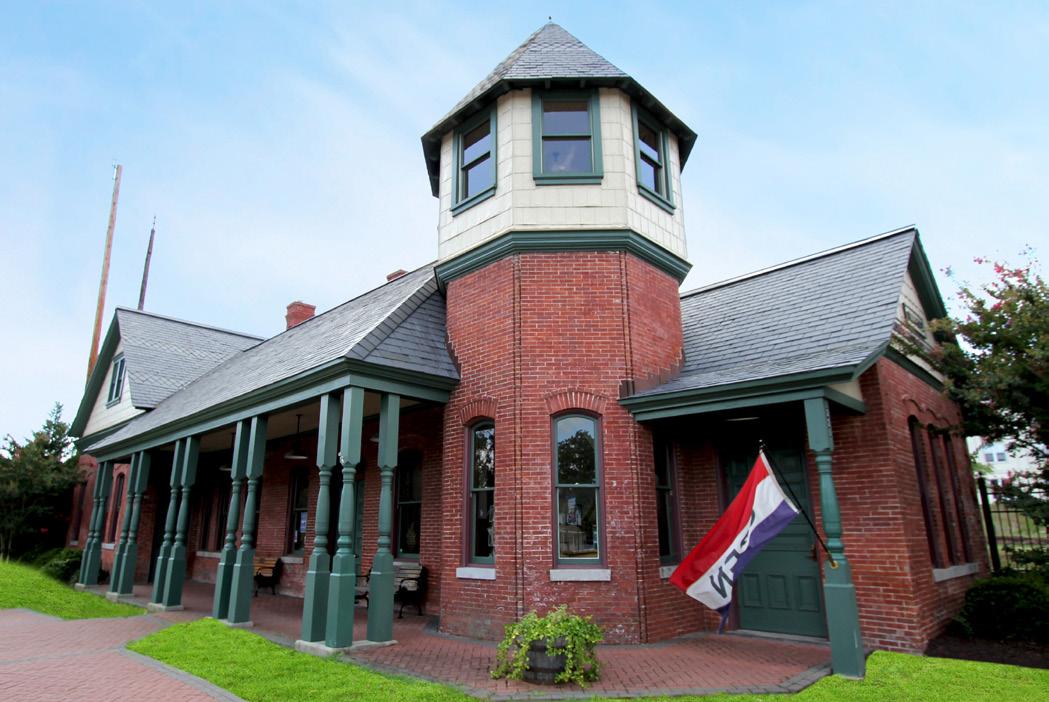
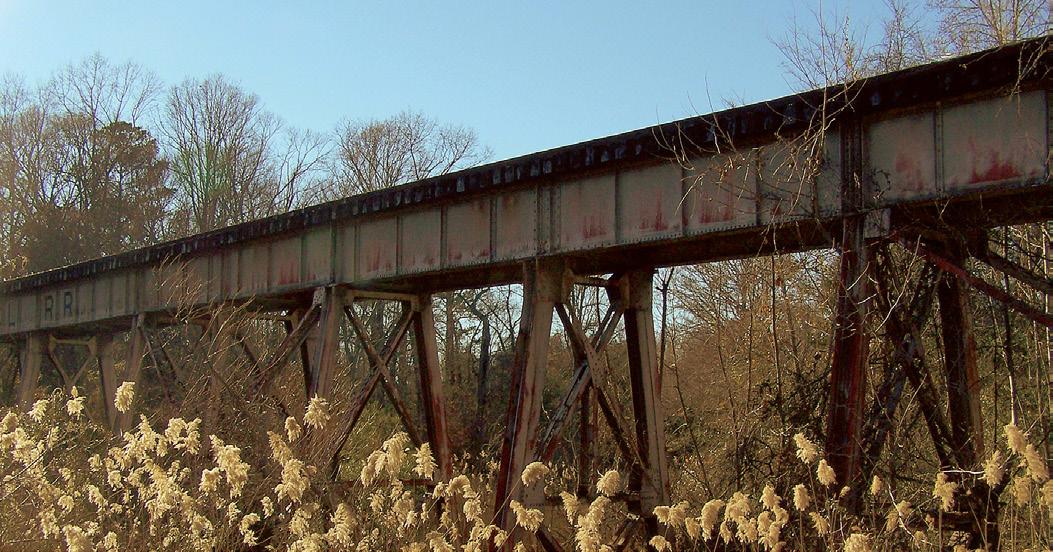
 PHOTOS ABOVE, left to right: Van Valkenburgh Home on Main Street; Atlantic Coastline Railroad Trestle; Train tracks in downtown Suffolk; Suffolk Center for Cultural Arts, today; Seaboard Station Railroad Museum & Gift Shop; Corner detail of Suffolk Center for Cultural Arts; Mr. Peanut® statue; Front door of Phillips-Dawson House, home to the Suffolk-Nansemond Historical Society; Statue in Cedar Hill Cemetery; The Historic Post Office, today; Downtown Suffolk at night; Winter Kitchen in Riddick’s Folly House Museum.
PHOTOS ABOVE, left to right: Van Valkenburgh Home on Main Street; Atlantic Coastline Railroad Trestle; Train tracks in downtown Suffolk; Suffolk Center for Cultural Arts, today; Seaboard Station Railroad Museum & Gift Shop; Corner detail of Suffolk Center for Cultural Arts; Mr. Peanut® statue; Front door of Phillips-Dawson House, home to the Suffolk-Nansemond Historical Society; Statue in Cedar Hill Cemetery; The Historic Post Office, today; Downtown Suffolk at night; Winter Kitchen in Riddick’s Folly House Museum.
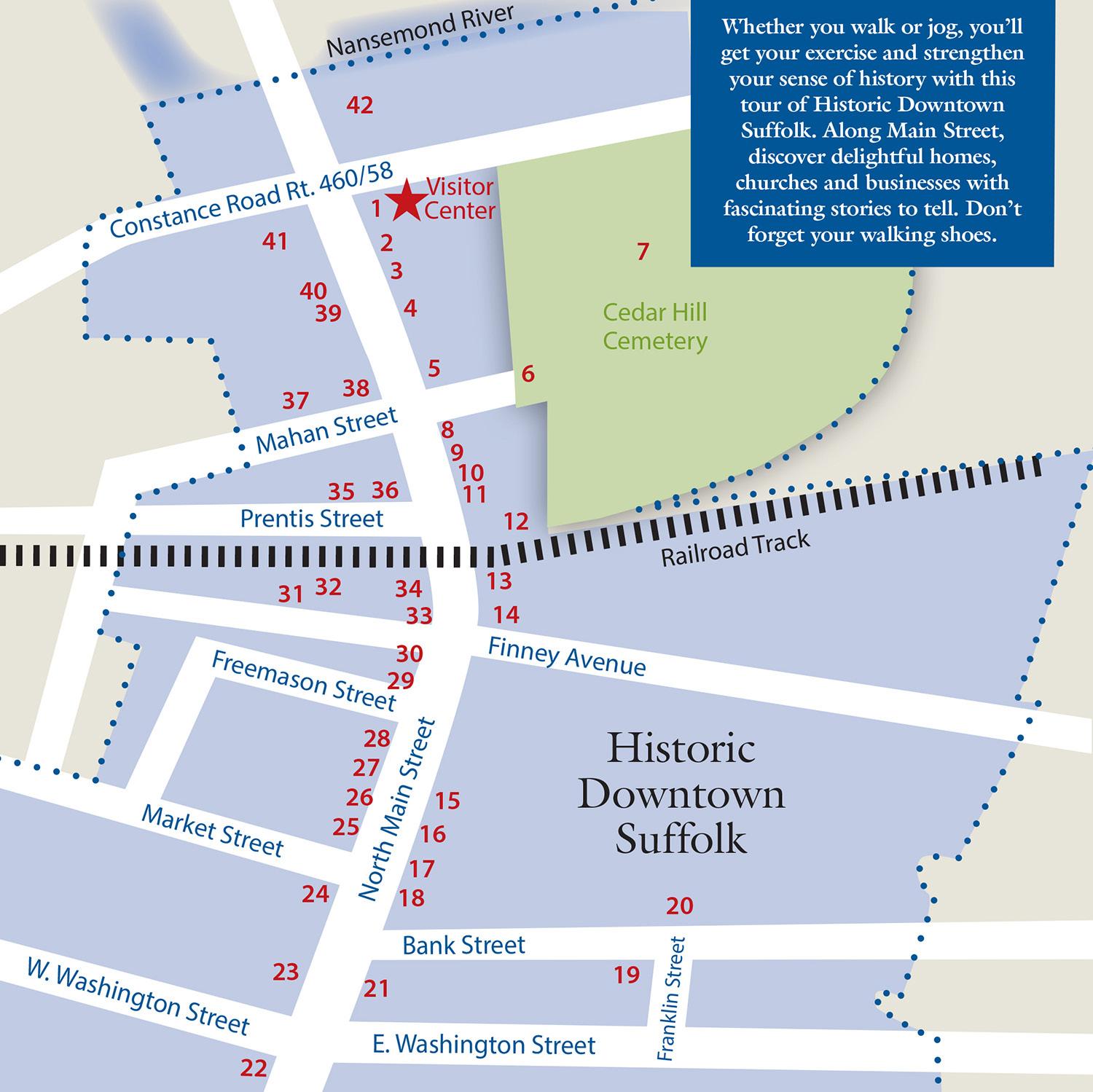
A pleasant introduction suggested by the Nansemond River Garden Club.
In 1802, the town of Suffolk, Virginia, purchased two and a half acres of an old family farm on the Nansemond River in order to build a community chapel. The Anglican Church had been abandoned at the end of the Revolutionary War. Townspeople attracted to new denominations and those who still favored the Book of Common Prayer needed a place to worship and to bury their loved ones.
1. THE FINNEY SISTERS The Finney sisters started a school for young ladies in Suffolk in 1869. Students came from all over Virginia and North Carolina. Tuition for boarders was about $160 per year. Part of the original building still exists near College Court on Main Street.
2. ANGEL AT THE OBELISK Pointing the way to heaven and symbolizing rebirth, protection and resurrection, the angel and her obelisk honor Wm. H. Smith and Martha Jane Rountree, wife of J.E. Lassiter. Note the Victorian recognition of two marriages.
3. DARDEN MONUMENT This beautifully carved stone honors “the only son,” Archibald Allen, who died at 20 years of age. Note the acanthus, lilies, ferns, thistle and foxglove that adorn the stone. To the Victorian, each of these had meaning and spoke of the family’s feelings for their loved ones.
4. THE FOUNTAIN There are several planned open areas in the old part of Cedar Hill, such as the area with the old fountain, where summer houses stood. In the Victorian period families would take outings to the cemetery to enjoy the garden and also quite literally to be closer to deceased loved ones.
5. CEMETERY MAP The Nansemond River Garden Club maintains several areas in the cemetery, including the sensory garden. In 2016, a bronze cemetery map was installed in such a way as to offer wheelchair access and is also translated into braille for the visually impaired. The map was part of a landscaping project that received the Common Wealth Award through the Garden Club of Virginia to assist in planning and production.



(C. 1839)
524 North Main Street ~ Begin your walking tour here at the Suffolk Visitor Center. The Courthouse was moved to Suffolk in 1755 and constructed on land donated by Colonel Lemuel Riddick. It was burned by the British on May 13, 1779, and was rebuilt shortly after the end of the Revolutionary War. In 1837, the Courthouse again burned during the “Great Fire of Suffolk” and was rebuilt and remained in use as a courthouse until the 1990s. The Historic Nansemond County Courthouse has been re-purposed as the Suffolk Visitor Center and Great Dismal Swamp Gallery.
2. RIDDICK’S FOLLY HOUSE MUSEUM (1837)


510 North Main Street ~ After the fire of 1837, Mills Riddick began building his 20-room Greek Revival mansion. He built the house of brick to withstand fire. Over two years were required for its completion and a scornful public called it “folly” to build such a large house in town. After two subsequent additions, the original house remains distinct. After the death of Mills Riddick, Nathaniel Riddick, the oldest child, bought the shares of the other children and lived there with his family until the Civil War. During the Union occupation of Suffolk (1862-63), the house was used as the headquarters of Major General John J. Peck and his staff of Union Army officers. The house remained in the family for over 130 years and is now open to the public as a museum.
3. SITE OF THE CASTLE INN
444 North Main Street ~The Castle Inn was one of several inns on Main or Front Street in the 18th and 19th centuries when the Port of Suffolk was a gateway to the Chesapeake Bay and beyond for travelers from northeastern North Carolina and southside Virginia. On February 25, 1825, the Marquis de Lafayette stopped at the inn during his American tour. The inn was destroyed in the Great Fire of 1837 and was never rebuilt.
4. FRONT STREET HOUSE (C. 1850)
434 North Main Street ~ This house was typical of many mid 19th century houses on the street until the 1980s when the house was raised and an English basement was constructed beneath it.
5. THE WOOD HOUSE (C. 1850)
400 North Main Street ~ Near this site the Great Fire of 1837 started in the workshop of cabinetmaker Edward Arnold. The fire was driven north by the wind, destroying all the structures in its path, including the Nansemond County Courthouse. Mrs. Mary Taylor Riddick, then widow of the builder of Riddick’s Folly, lived here c. 1850-1875, bequeathing it to her daughter, Juliana Wood, for whom it is named.
6. CEDAR HILL CEMETERY (C. 1802)
Mahan Street ~ John Constant, considered to be Suffolk’s first permanent English settler, perhaps as early as 1720, built a home on the hill overlooking his wharf and warehouses. The farm on the hill came to be known as “Constantia.” When the Church of England was abandoned in Suffolk after the Revolutionary War, the new denominations needed a place to worship so Union Chapel was built on part of Constantia Farm. Soon a graveyard was established around the church, and over time, more and more land was needed until all of Constantia became part of Cedar Hill Cemetery.
7. CONFEDERATE MONUMENT (1889)
Cedar Hill Cemetery ~

The monument is featured on the Virginia Civil War Trails. It was given by Colonel Tom Smith and was dedicated during a ceremony that included speeches by Governor Fitzhugh Lee and General D. H. Maury.

8. OLD POST OFFICE (C. 1785)
356 North Main Street ~ Built after the Revolutionary War, what is probably the oldest standing home on Main Street was the home of Postmaster Archibald Richardson, and later his son-in-law Postmaster Arthur Smith. For a time, the north wing served as the town post office. John Richardson Kilby, attorney, legislator and publisher of Suffolk’s first newspaper, resided here during the mid 19th century.
9. THE KILBY LAW OFFICE (1859)
350 North Main Street ~ The law office of John Kilby is the oldest commercial brick structure in Suffolk. In addition to practicing law here, Mr. Kilby published Suffolk’s first newspaper out of this building. The south side was added later in the 19th century as a family residence.
10. THE EPPS HOUSE (C. 1830)
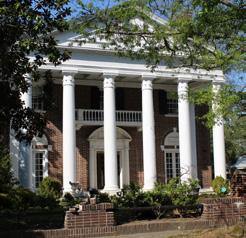

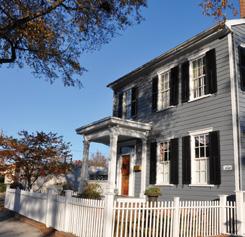


346 North Main Street ~ Although this home hardly resembles the one that was built between 1820 and 1830, the Epps House is one of the oldest in the city. It was once the townhome of Sheriff Hamlin Epps. Later it was the residence of the Cowper family and might have served as an early post office for Narcissa Cowper, first female postmistress.
11. THE ANN BROWNE HOUSE (C. 1835)
342 North Main Street ~ The Ann Browne House is a fine example of a typical 19th century Main Street home. Like other 19th century houses on the street, it was built using mortise and tenon joints, with a clapboard exterior, featuring a side hall plan. The house was owned by several prominent Suffolk residents, including Mrs. Ann Riddick Browne, for whom it is named.
12. OLD SEABOARD PASSENGER STATION (1885)

326 North Main Street ~ The train station operated as a passenger station until 1968 and continued as a freight station through the 1980s. Threatened with demolition after a major fire in the 1990s, the building underwent significant renovations and now serves as a museum. An important feature is an HQ scale model showing Suffolk, c. 1907, when six railroads served the town.
13. OLD METHODIST CHURCH (1861)
318 North Main Street ~ The Methodists in town had just moved into this building, their new church, when the Civil War started in 1861. During the Union occupation of Suffolk from 1862-63, it was used as a hospital. After 1863, services continued in this building until the new Methodist Church opened at 202 N. Main in 1916. The old church was converted to apartments in the 1920s.
14. CENTRAL HOTEL/SUFFOLK FEMALE INSTITUTE AND COLLEGE COURT (C. 1800)
302-304 North Main Street ~ The first section of the Central Hotel was likely constructed around 1790 with an addition made around 1818. There were several different owners of the hotel over the years, but James McGuire was the Innkeeper when the Union Army occupied Suffolk in 1862 and used the building as the quarters for officers. After the Civil War, the property was sold to Miss Sallie Finney, who established the Suffolk Female Institute with her sisters. The boarding and day school offered a normal school certificate for would-be teachers. “The College,” as it came to be called, closed in 1908. John Pinner bought the campus and around 1915 constructed a group of California-style bungalows centering on a pedestrian courtyard. He removed the center section of the hotel-turned-college and installed a large gate as entrance to what he named College Court. The court became a fashionable place to live through the middle of the century. Eventually, the older north portion of the hotel was demolished, leaving the gate and the 1818 portion.
220 North Main Street ~ Mr. and Mrs. Richard Seth Eley moved into this house as bride and groom before building 251 North Main Street. This typical 19th century clapboard house was rental property for many years until Eley descendant Elizabeth Campbell van Valkenburgh and her husband, Paul, refurbished it to make it their home. In the late 20th century, the house was sold by the van Valkenburgh heirs to the Suffolk Christian Church. It was sold again and in 1997 the new owners had it moved about 80 feet to its current site.
16. SUFFOLK CHRISTIAN CHURCH (1891)


216 North Main Street ~ Dr. William Brock Wellons founded the Suffolk Christian Church in 1860. During the Civil War, Union troops occupied Suffolk and forced the pastor, Dr. Wellons, to flee the city, after which he became a chaplain of the Confederate Army. After the war, Dr. Wellons helped establish the first successful bank in the town, published the Christian Sun newspaper, and established the Suffolk Collegiate Institute. In the early 1890s, the old church was torn down and replaced by the current structure in 1894. The façade was significantly altered in the 1920s
17. MAIN STREET
METHODIST CHURCH (1916)
202 North Main Street ~ The Main Street Methodist Church is an unusual combination of Tudor and Gothic styles. The façade is crowned with a decorated Tudor gable and over the portal is an exquisite large Gothic window, complete with stone mullions. This is the third location of this church on Main Street.
18. POST OFFICE (1911)
200 North Main Street ~ Built in the American Renaissance style, the Post Office is the only monumental building on Main Street constructed of dressed stone. The handsome tetra style portico includes fluted Doric columns, swags and a full entablature with modillions and details. Closed in 1987, the building is now a law office.
19. THE PHILLIPS-DAWSON HOUSE (1881)
137 Bank Street ~ This structure was originally a much smaller house that fronted on Franklin Street and was believed to have been built for the Horace Phillips family around 1881. This French Second Empire house grew by several additions made between 1889 and the 1920s. Eventually the entrance was moved to the Bank Street side. In 1940, the home was purchased by Dr. and Mrs. Challis Dawson. Currently it is the headquarters of the SuffolkNansemond Historical Society, the society being the third owner of the house in 124 years.
20. THE TRUITT HOUSE


204 Bank Street ~ Bank Street was opened for development after the Civil War, as entrepreneurs from other areas came to Suffolk to take advantage of rich natural resources and excellent transportation lines here. One of those entrepreneurs was George W. Truitt, a lumberman, who built this imposing house in 1909. A mahogany staircase rises to the third floor ballroom. Marble mantles are found in the principle rooms and a gallery for musicians overlooks the drawing room.
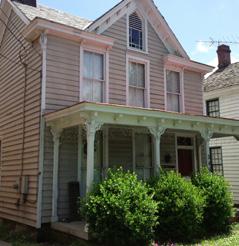
21. CITY MARKET (1890)
The City Market was built on the east side of Main Street in 1890 and 1891. Before the days of motion pictures, the Academy of Music was the place for entertainment. There were vaudeville shows, music recitals, lectures and plays. The upper floor of the market was the spot for dances, basketball games and roller skating. Merchants sold live chickens and fresh produce on the lower level. For Memorial Day, ladies would bring flowers to sell. The building was demolished in 1962. As part of the downtown revitalization, artists Chip Wilkerson and Kevin Jacobson were commissioned to paint a mural of the market on the wall of the building adjacent to the original site.
22. MR. PEANUT (CHARACTER CORNER)

Corner of Main Street and Washington Street ~ In 1916, Amedeo Obici offered a prize for the best idea for a symbol to represent his company, Planters Nut and Chocolate Company. The winning entry included sketches of “Mr. Peanut” by fourteen-year-old Anthony Gentile of Suffolk. Later, a commercial artist added the hat and monocle to create the Mr. Peanut we know and love today. Gentile received a $5 cash prize for his winning entry. Reportedly, Obici later paid Gentile’s way through college and medical school.
23. NATIONAL BANK BUILDING (1916)
112 West Washington Street ~
This building was the second building on this site for the National Bank. The handsome Beaux Arts style building spoke of commerce and prosperity and was designed to appeal to businessmen. In contrast, the American Bank Building across the street employs a much more restrained style chosen by the Bank’s founders, who particularly sought the business of farmers in the region.

24. THE ELLIOT HOTEL (C. 1925)
181 North Main Street ~ The prosperity of the 1920s is commemorated in the construction of the Elliot Hotel, built by Milton Elliot. With its three ballrooms, the hotel was, in its day, the social center of downtown. It now serves as an apartment building and restaurant.

25. ST. PAUL’S EPISCOPAL CHURCH (C. 1895)
213 North Main Street ~ The Church of England has a long history in Suffolk and Nansemond County, beginning in the year 1642 when a church was founded at Reid’s Ferry, a structure that was later abandoned for a new church in 1752 in the Town of Suffolk. Following the Revolutionary War and accompanying hostile attitude toward the “Established Church,” the Parish Church fell into disuse and decay. By the early 19th century, the 1753 church was razed and the bricks sold. By 1846, the parish had revived enough to own a small church in the three hundred block of North Main Street. Continuous growth made necessary the construction of the present parish building located at 213 North Main Street. This building was completed in 1895.
26. THE MYRICK HOUSE (C. 1820)

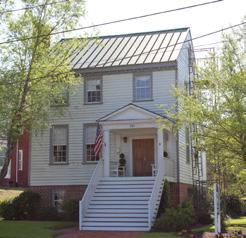


223 North Main Street ~ Certainly this was the “diminutive frame house” mentioned in an early account of the street. The little house is notable for its central chimney, an unusual feature for its time and place. There have been many owners through the years, but it takes its name from Theodore Myrick, who lived here in the 20th century.
227 North Main Street ~ This house
stands in part of John Granbery’s sixteen acres in the 1785 expansion of Main Street. Though many of the lots were sold in 1791, this one remained in Granbery’s possession until his death in 1815, giving rise to the notion that Granbery might have built the house here. Like most old homes on this street, it has changed over time with a significant addition made on the south side around 1840. In 1833, the house was purchased by Benjamin Riddick, and, in 1869, by Exum B. Britt, son-in-law of Riddick. During the Civil War, Riddick was the fifth mayor of Suffolk, 1860-1864, and served as mayor again in 1875-1882. The Britt family and descendants owned the house for more than one hundred years.
28. FIRST BAPTIST CHURCH, MAIN STREET (1957)

237 North Main Street ~ In the spring of 1827, Elder Robert T. Daniel visited the town of Suffolk and preached to small groups in private homes. On September 11, 1827, these groups were constituted into the First Baptist Church of Suffolk. The first year the group worshiped at Union Chapel in Green Hill Cemetery (Cedar Hill Cemetery).
In 1836, a framed church was erected on the corner of North Main Street and the present Freemason Street. During the Civil War, it was converted into a hospital by Union troops, who carried off the pulpit and all the seats, along with most of the window sashes. In 1887, the building was moved to the back of the lot and a much larger building was erected. The current structure, the third church on this site, was completed in 1957.


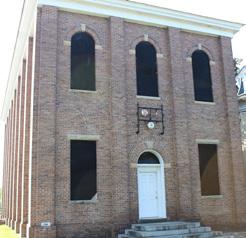
29. MASONIC LODGE (1910)
247 North Main Street ~Dating back to the 1790s, the Masonic Order was most likely the first of many fraternal orders in Suffolk. The current structure was constructed on North Main Street around 1910 to replace an earlier one on the same lot. During the Union occupation of Suffolk, a tower was built on top of the lodge. In 1863 the hall was used as a hospital by the Rhode Island troops.
30. THE RICHARD SETH ELEY HOME (C. 1878)

251 North Main Street ~ This home was built by Richard Seth Eley and his wife, Eliza Priscilla Riddick Eley. This exceptionally fine structure reflects the French Second Empire influence on American architecture from the 1850s through the 1870s. The home is still inhabited by the descendants of the Eley family.
31. JEFFERSON SCHOOL (1922)

120 West Finney Avenue ~ Built in 1911, The Jefferson School was a center of learning for many years. Situated adjacent to the former Suffolk High School, now the Suffolk Center for Cultural Arts, the building has been repurposed as the Jefferson School Lofts.

32. SUFFOLK HIGH SCHOOL (1922)
110 West Finney Avenue ~ Suffolk High School was designed by one of Virginia’s most prolific architects, Charles M. Robinson. The school closed in 1990 and the building sat vacant for more than a decade. After undergoing renovations, the 63,000 square-foot three-story schoolhouse reopened in 2006, as the Suffolk Center for Cultural Arts. This state-ofthe-art facility boasts a grand ballroom and banquet hall, a 500-seat theatre, art galleries, classrooms, meeting space, a restaurant and a gift shop.
33. OBICI HEALTHCARE FOUNDATION (2010)
106 West Finney Avenue ~ Obici Healthcare Foundation is a tribute to the generosity and compassion of Amedeo Obici, founder of Planters Peanut Company. Successful in business and passionate about helping the people of this community, Mr. Obici was the sole benefactor of the Louise Obici Memorial Hospital, named for and dedicated to his beloved wife. The Foundation was created from his estate and from the proceeds of the sale of the hospital in 2006. Obici Healthcare Foundation continues Amedeo Obici’s legacy to provide access to medical care for all.
34. THE PRENTIS HOUSE (C. 1800)
321 North Main Street ~ Purchased by Peter Bowdoin Prentis from Dr. John Thompson Kilby on December 21, 1857. Originally intended to be a manor house, the home was set back from the street with a large yard on the north side. When the Union Army occupied Suffolk during the Civil War, Mr. Prentis, Clerk of the Nansemond County Court, was arrested with other prominent citizens and held hostage to ensure the cooperation of the townspeople with the Union troops. He was safely returned and resumed his position as Clerk of Court following the war.
35. THE TOWNSEND HOUSE (C. 1870)
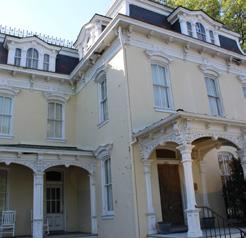
201 Prentis Street ~ After the Civil War, John Franklin Pinner and others began to develop Bank, Franklin, and Pinner Streets to accommodate the increasing population and the growing railroad industry. In 2001, the house, formerly on Pinner Street, was moved to its current site to avoid demolition, was restored and given its new name.
36. THE GARDNER STORE (C. 1825)
341 North Main Street ~ Ballast stones from ships that came into the Port of Suffolk were used in the foundation of this building that served for over a century as a home and store combined. According to local lore, the basement was used to house prisoners during the Union occupation of Suffolk. After years of disuse and neglect, this building has been restored for commercial use.
37. FIRST BAPTIST CHURCH, MAHAN STREET (1951)
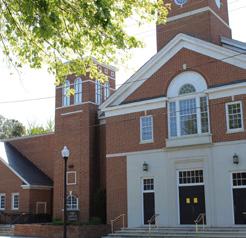
112 Mahan Street ~ In existence for 137 years, First Baptist Church has the distinction of being the mother church for many African-American churches in Suffolk. Founded in 1866, this church was served by a Circuit Rider by the name of Rev. E. G. Corprew. Services were held in the old Union Chapel located in Cedar Hill Cemetery until 1868 at which time the congregation moved to the Old Alms house on the corner of North Main and Mahan Streets. In 1870, this small group of Christians moved into their first church on what was then Back Street, now known as Church Street. Rev. Jordan Thompson was the first church pastor. He and the members hewed the logs and constructed the church. In 1892, Rev. William W. Gaines, founder of Nansemond Collegiate Institute, moved the church into its second newly built home on Mahan Street. The current edifice was constructed under the leadership of Pastor A. Lincoln James in 1951.
38. THE COLDEN HOUSE (1912)
403 North Main Street ~ At this site in 1752, the Alms House for the poor and free school of the vestry of the Upper Parish was constructed. In the late 1800s, the congregation that would become the First Baptist Church on Mahan Street met in the old Alms House before building their first church. The current structure was built in 1912 by Willie and Fanny Colden, prominent members of the African-American community and of First Baptist Church, Mahan Street.

39. THE CARR HOUSE (C. 1837)

425 Main Street ~ This antebellum home is believed to have been built by attorney Robert Riddick Prentis. In 1853, the house was sold to Mrs. Mary Allen Riddick Webb, widow of Richard Webb, who had served in the Virginia Legislature (1853-1865). Mrs. Webb was a daughter of Mills and Mary Taylor Riddick of Riddick’s Folly. During much of the 20th century, it was home to Riddick descendant Mary Washington Withers Carr and her husband B.E. Carr.
40. OLD MAGNOLIAS C. 1837)
431 North Main Street ~ Old Magnolias was built by Captain John B. Wyatt after the fire of 1837. The house was a refuge to many Nansemond County residents who lost their homes during the Civil War.
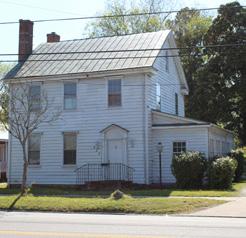
41.

Western Avenue ~ Situated behind the Main Street Post Office, this former structure served as the second Parish Church building of the Church of England in the Upper Parish of Nansemond. Colonel Daniel Pugh of Nansemond County built the church, which was likely a cross-shaped brick structure. The church yard was enclosed with a wooden fence in 1758 and was the community’s first cemetery. Following the Revolutionary War, the church suffered from abuse and neglect. The existing monument was built by the Association for the Preservation of Virginia Antiquities.
42. CONSTANT’S WHARF (C. 1720)

Constance Road ~ John Constant settled on the banks of the Nansemond River, establishing a wharf and warehouse as a bustling center of trade. The Constant home on present-day Cedar Hill was demolished in the 1920s, but a replica was rebuilt by the Constantia Chapter of the Daughters of the American Revolution. The house was moved in 1993 and now stands on West Washington Street. The wharf site is now home to the Hilton Garden Inn Suffolk Riverfront and Constant’s Wharf Park & Marina.

Overlooking the Nansemond River, the provincial Roman Revival style structure with its very tall Tuscan columns was an impressive site for early travelers arriving on the river. The Historic Nansemond County Courthouse is the third such structure on this particular site. Two previous buildings were destroyed by fires. The first fire occurred in May 1779 during the Revolutionary War when the British burned the town. Then, on June 3, 1837, “The Great Fire” destroyed both sides of Main Street from the north of Mahan Street to the courthouse. Suffolk was located on the Union’s forward line of defense during much of the Civil War, and the city fell under siege by Confederate forces from April 11 to May 4, 1863. During that time, the courthouse was reportedly used as barracks for Union soldiers; the neighboring Mills Riddick home (Riddick’s Folly) served as the Union Army headquarters.
The periods of 1894 and 1958 brought repairs and varied remodeling, and the structure retained very little interior trim except for window architrave moldings. Street improvements and parking lots claimed its surrounding white-picket fence and once impressive green vistas. The building, however, remained in service as a courthouse until the completion of the Mills Godwin Courts Complex in 1998.
Today, the Historic Nansemond County Courthouse retains its commanding presence and historical significance as the Suffolk Visitor Center. Renovated in 2010, the first floor has an exhibit gallery highlighting the history of Suffolk’s Great Dismal Swamp and Suffolk Raceway, a greeting and information area, and a gift shop. The second floor houses City of Suffolk municipal offices for the Division of Tourism. An outdoor pavilion was added in 2012, to host the Suffolk Farmers’ Market as well as special events.

The first Nansemond County Courthouse was constructed in 1723 at Jarnegan’s Bridge (near what is now Lake Cahoon dam). At an undetermined date before 1755, Suffolk became the county seat and a courthouse and jail were constructed at the intersection of Main Street and Constance Road.







